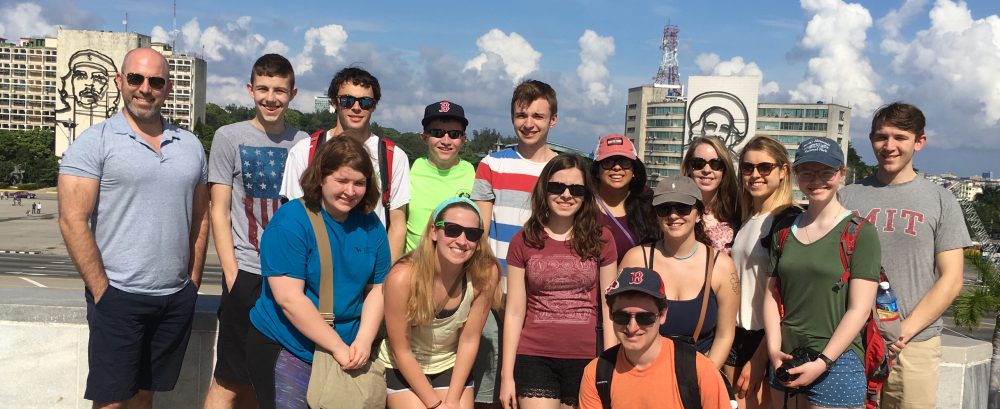As I prepared for my trip to Havana, I wondered what local attitudes would be towards same-sex marriage and the LGBTQ community as a whole. Although I read about Cuba’s policies online, I was surprised by how much I still did not know. On January 9th, my peer group and I were fortunate enough to visit CENESEX, which is also known as the National Center for Sexual Education. Upon arrival, it was clear that Cubans have been making great strides toward acceptance and equality. Inside CENESEX, the walls were cover with artwork depicting same- sex couples and inclusive themes. There were some rather erotic-looking sculptures found in the outdoor patio space as well. The building and its contents were strikingly different than what one would expect to see in the United States. Needless to say, Cuba takes sexual education very seriously. There are 44 sexology chairs located at different universities throughout the country. CENESEX itself has several branches that deal with education, legal issues, research, and support. For example, if a transgendered individual feels as though his or her rights have been violated, he or she could go directly to CENESEX as opposed to a law enforcement agency. Throughout the entirety of the day, it was made apparent that although the USA has become extremely progressive toward LGBTQ policy, it is still lacking in other areas compared to Cuba.
That being said, Cuba is not quite on the same page as us when it comes to LGBTQ individuals. Despite the incredible progress Cuba has made over the last ten years, the LGBTQ community still faces exclusion from certain night clubs and marriage rights. In 1993, the film “Strawberry and Chocolate” was released. This film helped introduce homosexuality to the public and began the movement towards a more inclusive Cuban nation. However, due to the strong Machismo culture in Latin America, homosexuality is considered taboo in the majority. It is clear that the Cuban people fully embrace their sexuality and implement it into their dances and artwork. However, when it comes to marriage, only heterosexual couples are permitted to participate and be considered legitimate. I was shocked to learn this since there seemed to be such a wide acceptance of teenage parents and single parents shown through parades and events in Cuba. These roles can sometimes be seen as shameful in the US, and yet gay marriage is legal in all 50 states. In regards to the trans population, reassignment surgery is extremely unpopular. This is completely different than the United States, where we have celebrities such as Caitlin Jenner who proudly elect to get the operation.
CENESEX also shed some light on the wage gap between genders (or lack thereof). In the United States, women make about 87 cents for each dollar a man makes. This is just about equal to the difference between the USD and the CUC. In Cuba, however, if a man and woman are doing the same job and have the same qualifications, they will both earn the same pay. I find it humorous that many American citizens consider themselves to be more developed than Cuba, and yet we still continue to fail to close the wage gap between the men and women of the work force.
Later in the day we visited the Museum of the Revolution. We were able to view actual articles of Castro and Che’s clothing, weaponry, and other items. Because of our tour guide’s persuasion skills, we were able to enter into the presidential office. Here, the Cuban flag was preserved and placed beside the desk. Ana, our guide, inspired me when she told me that her daughter was not only the sole worker who preserved the flag, but that she was also the one and only female worker in the textile industry. Afterward, we entered a large conference/dining room across the hall. Here, there was a beautiful mural covering the entire wall. One of the subjects of the piece was named Ana Betancourt. She was the first woman to stand up and decide that she wanted women to be able to join the men during the war of independence from Spain.
Several times throughout the day, we learned about some rather empowering Cuban women. The experiences from this day really allowed me to refresh my perspective of the American workforce and women’s rights. I feel as though I just accepted the fact that I will earn less than my male co-workers, but now I know the USA as a nation can strive to do better. As it turns out, we are not as ahead of other countries as we thought. We may have a surplus of material goods, but we could really take a lesson from Cuba in regards to equal wages. Looking back on this day, I feel grateful to have had the opportunity to learn far beyond my original Google search.
